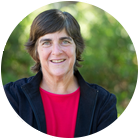
Over the past few years, our graduate programs in Stanford Engineering have doubled down on identifying and recruiting the very best students from the most diverse possible pool. Together with similar university-level efforts in undergraduate admissions, we have made great strides in increasing the diversity of our engineering student population while maintaining our high standard of excellence. As our population shifts, we are also building programs and initiatives to create a more inclusive environment — a culture in which we support all of our students as essential members of our community.
Supporting all of our students is critical. We’ve collected a number of stories in which some of our remarkable students tell us of their accomplishments and, in many cases, the kinds of challenges they face. (Click here to learn about these student’s exceptional journeys.) One thread running through some of these stories is the students’ reliance on faculty and peer mentors, student societies and organizations, and initiatives such as the Stanford Summer Engineering Academy (SSEA). SSEA helps facilitate the transition to Stanford for incoming undergraduates who may be underrepresented in engineering fields by giving them exposure to math and computer science courses taught by Stanford lecturers, access to engineering faculty, and, throughout their undergraduate career, support, mentoring, and a tight-knit community of peers.
We are committed to supporting these types of programs, investing in new ones, and evaluating and assessing what’s working and what is not. Our goal is to have a robust set of programs and structures so that all of our students can thrive at Stanford. I look forward to sharing more about these initiatives as we move forward.
Jennifer Widom
Frederick Emmons Terman Dean, Stanford School of Engineering
Fletcher Jones Professor in Computer Science and Electrical Engineering



